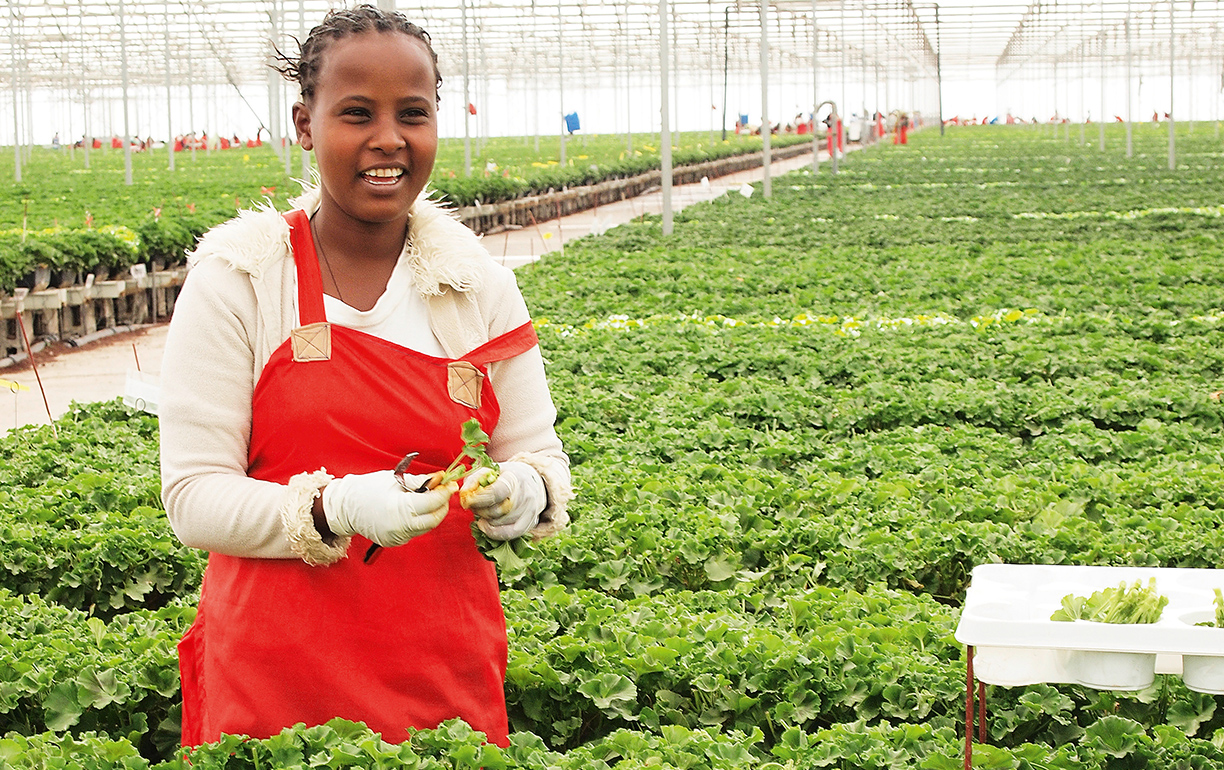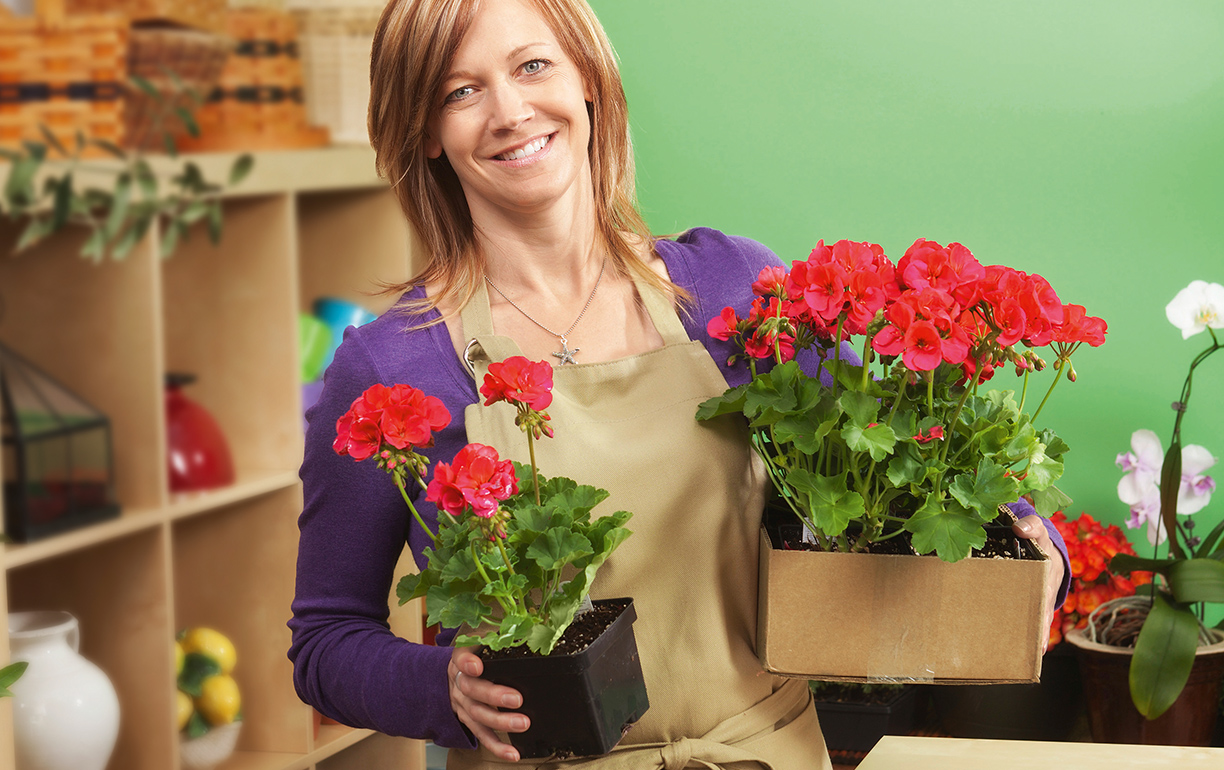
Flying colors.
This special hybrid doesn’t come from a factory in the Far East but from Africa: the geranium. The strain from the family of the cranesbills (geraniaceae) has been living in Germany under a false name since the 17th century. To be botanically correct, it is in fact a pelargonium. Over the years, however, it has become commonly known as a geranium. It exists in countless color variations. Sonja Dümmen is familiar with over 90 different varieties. She is Marketing Manager at Dümmen Orange, one of the world’s leading growers of cut flowers, potted and bedding plants, and perennials. “For us, winter time is geranium time,” says the 41-year-old.

“We import about 100 million geranium cuttings from Ethiopia between Christmas and March. The rest of the year we produce poinsettias there.” Dümmen Orange has seven production locations worldwide – three in Central America and four in Africa. One of the most modern cuttings farms is located in Koka, approximately 90 kilometers south of the Ethiopian capital Addis Abeba (ADD). The farm covers an area of about 40 hectares, with vast greenhouses as far as the eye can see.
It also has an extensive water treatment system and the highest standards of pest control. Around 1,000 employees cultivate the new geranium shoots. The mother plants come from Dümmen’s cultivation laboratory in Rheinberg near Düsseldorf. They reach Ethiopia long before the geranium season and grow there via cuttings. In East Africa’s climate, which is warm all year round, the geraniums have the best conditions for rapid growth.
Once the plants are sufficient in numbers and strength, it’s time to harvest the cuttings. The workers handle them with utmost care, as the fresh shoots are very sensitive, particularly when it comes to transport. It shouldn’t take more than two days; otherwise the cuttings would be damaged. Sea transport therefore is not an option. The goods are trucked to Bole International Airport in Addis Abeba, where the green passengers take off as temperature-controlled airfreight. During the main season Lufthansa Cargo flies the geranium cuttings up to six times per week to Frankfurt Airport (FRA), 5,340 kilometers away. In the belly of an Airbus A330-300, for example. “For us the hub in Frankfurt is an import airport, as well as a transit area,” says Sonja Dümmen. “Thanks to Lufthansa Cargo’s excellent connecting flights we can offer very short delivery times, particularly to our customers overseas.”
After landing, the cuttings are meticulously checked for pests by the pest control service. If everything’s OK, the plants continue their journey via the road feeder service. After the long journey, they can take root again in potting compost at Dümmen Orange in Rheinberg. The company then sells the grown geraniums to nurseries throughout Europe. Finally, they supply retailers with the matured, flowering plants. More than 140 million geraniums are sold over the counter every year in Germany, and most of the cranesbills are transported by the cargo airline with the crane as its symbol.
Photos:
Dümmen Orange, yinyang/iStock
|
Once the plants are sufficient in numbers and strength, it’s time to harvest the cuttings. The workers handle them with utmost care, as the fresh shoots are very sensitive, particularly when it comes to transport. It shouldn’t take more than two days; otherwise the cuttings would be damaged. Sea transport therefore is not an option. The goods are trucked to Bole International Airport in Addis Abeba, where the green passengers take off as temperature-controlled airfreight. During the main season Lufthansa Cargo flies the geranium cuttings up to six times per week to Frankfurt Airport (FRA), 5,340 kilometers away. In the belly of an Airbus A330-300, for example. “For us the hub in Frankfurt is an import airport, as well as a transit area,” says Sonja Dümmen. “Thanks to Lufthansa Cargo’s excellent connecting flights we can offer very short delivery times, particularly to our customers overseas.” |
After landing, the cuttings are meticulously checked for pests by the pest control service. If everything’s OK, the plants continue their journey via the road feeder service. After the long journey, they can take root again in potting compost at Dümmen Orange in Rheinberg. The company then sells the grown geraniums to nurseries throughout Europe. Finally, they supply retailers with the matured, flowering plants. More than 140 million geraniums are sold over the counter every year in Germany, and most of the cranesbills are transported by the cargo airline with the crane as its symbol. |
Photos:
Dümmen Orange, yinyang/iStock
